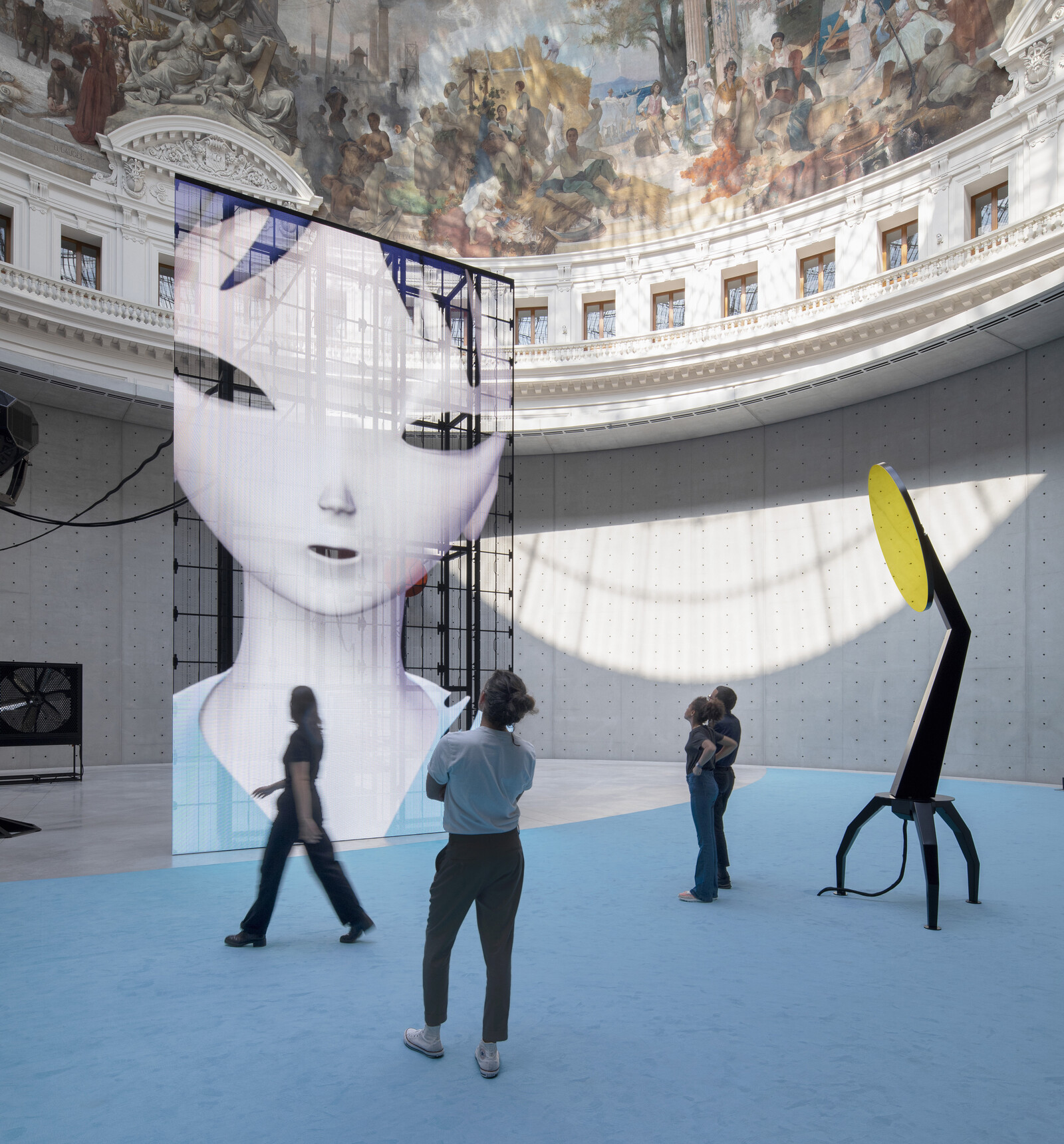June 22, 2022–January 2, 2023
2 Rue de Viarmes
75001 Paris
France
Pinault Collection presents Une seconde d’éternité, a group exhibition conceived by Emma Lavigne as an introspective journey, at the Bourse de Commerce from June 2022 to January 2023.
For this new season bringing together summer and winter, the urgent nature of the here and now, and the search for the infinite, elusive though it may be, Une seconde d’éternité takes visitors on a journey inspired by the question and experience of time, through a selection of artworks from the Pinault Collection.
The account created here through the works of 20 artists explores the present moment, in turn suspended, fleeting, inhabited by spectral presences, and traversed by the theme of loss and incarnation. An installation where the intensity of the presence of bodies and images is set against their fleeting nature and in which it a question of finding “in one second the infinity of joy” and contemplation, in the words of Charles Baudelaire.
Carte Blanche to Philippe Parreno
For the entire summer, Philippe Parreno is transforming the Rotunda of the Bourse de Commerce into a new territory where temporalities and climates coexist: air, light, past, present and future, reality and fiction all generate sensations that affect the perceptions and bodies of visitors. In this solar landscape, the character of Annlee is reincarnated like a mirage, on a screen or in other bodies, through the situation proposed by Tino Sehgal. The metabolism of a bioreactor in which the living ferments gives rise to new forms of perception and life. Heliostats, three suns in motion, fallen under the immense glass roof and hung on the concrete walls, scan the space and seek each other out by refracting the zenithal rays. A sound wave unfolds in the space: it is Echo (Dancing in the Street), a composition by the musician Arca (with Nicolas Becker), replayed by an artificial intelligence (Bronze), itself influenced by the atmospheric conditions and the presence of visitors.
The legacy of Felix Gonzales-Torres
The exhibition is rooted in part in the work of Felix Gonzalez-Torres and the way in which his practice opens up to other modes of aesthetic experience and relationship. Since April, a new exhibition has been devoted to Felix Gonzalez-Torres and Roni Horn and their artistic friendship in Gallery 2. This legacy, which winds its way through Une seconde d’éternité, is underpinned by an awareness of the brevity of life and the openness of the work of art to tangible emotions. One of the challenges of Felix Gonzalez-Torres’ work is to embody this passage of time, to confront impermanence, as in “Untitled” (Perfect Lovers) (1991), or the performative work “Untitled” (Go-Go Dancing Platform) (1991).
Shadows, reflections, and spectral presences
Une seconde d’éternité is frequented by shadows: that of Callas, appearing in Dominique Gonzalez-Foerster’s installation, and that of AnnLee, who haunts, through several avatars, the spaces of the Bourse de Commerce. These apparitions go as far as the reflection of the viewer in the works of Larry Bell, Rudolf Stingel, Liz Deschenes and Nina Canell.
In the course of the exhibition, the figure sometimes disappears, as can be seen in Rudolf Stingel’s abstractions from which the bodies seem to be absent, or in Sturtevant’s appropriations, with the uninhabited envelope of Robert Gober’s dress. These disappearances are replaced by a quest for the moment, as on the surface of the fleeting landscapes of Wolfgang Tillmans and Sherrie Levine.
Unstable identities
This questioning of time is not only existential: in the work of Felix Gonzalez-Torres, the question of transience, of intensity, becomes political. In Gallery 2, the exhibition Felix Gonzalez-Torres and Roni Horn—which is rooted in the strength, radicalism and commitment of both artists—reveals similar political or militant themes: the question of identity, the place of minorities, the tragedy of AIDS, a form of resistance to the violence of society, to its assignations… Elsewhere, Carrie Mae Weems’ spectral figures—representing the past and future ghosts of young African Americans—constitute another political use of the spectrum, as do the bodies of migrants captured by Miriam Cahn in Mare Nostrum, sinking into the blue-toned abyss.
Surviving images
The images throughout Une seconde d’éternité appear and disappear according to the light like surviving images, in the words of Georges Didi-Huberman. We hear the melody of Franz Liszt’s Nuages gris (1881) played in Philippe Parreno’s Quasi Objects, reminiscent of the scene in Stanley Kubrick’s Eyes Wide Shut (1999) in which Tom Cruise embraces a dead body in a morgue to give it new life.
In the Studio, Philippe Parreno’s video work Marilyn invites the viewer into the suite of the Waldorf-Astoria hotel, which the star occupied in the late 1950s. The subjective point of view of the camera places the viewer in a position that one imagines to be that of the actress, focusing on the fountain pen running across the hotel’s stationery. The telephone rings in vain… A tracking shot ends up revealing that the room is only a set, that the writing is the mechanical work of a robotic arm: what we have seen - or thought we had seen - is an artifice, the “portrait of a ghost incarnated in an image”.
Carte Blanche to Anri Sala
This autumn, to close this “second of eternity,” the Bourse de Commerce invites Anri Sala to enter into this round of time withj its ghosts, appearances, and erasures. Around Time No Longer (2021), a video work that is being presented in France for the first time on a huge screen in the Rotunda, Anri Sala takes over several spaces with some of the emblematic pieces drawn from the Pinault Collection (Take Over, 2017; 1395 Days without Red, 2011; Nocturnes, 1999), while the showcases in the Passage present twenty-four diptychs of prints and drawings (Untitled Maps/Species, 2018-2022).


